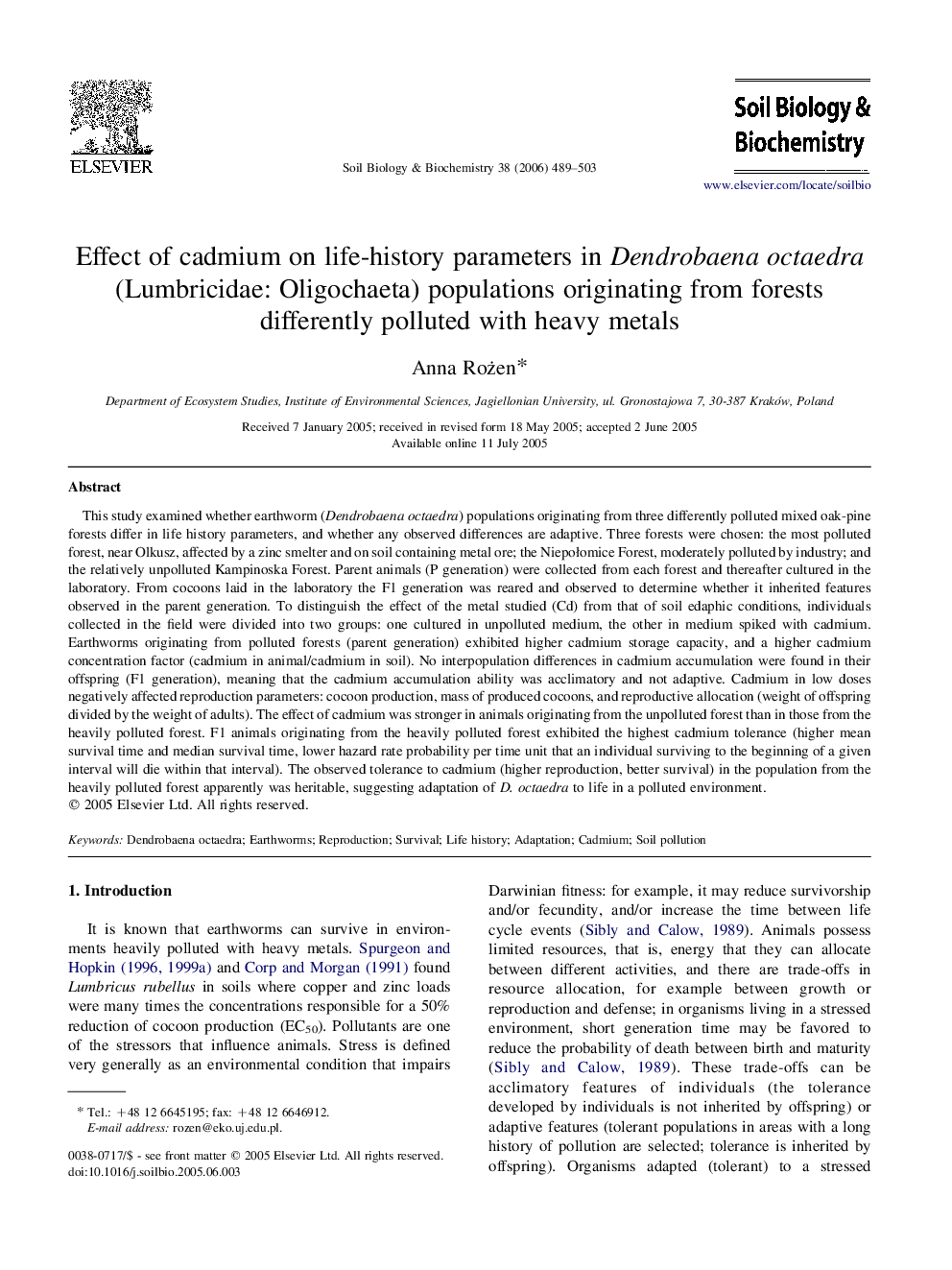| Article ID | Journal | Published Year | Pages | File Type |
|---|---|---|---|---|
| 2026688 | Soil Biology and Biochemistry | 2006 | 15 Pages |
This study examined whether earthworm (Dendrobaena octaedra) populations originating from three differently polluted mixed oak-pine forests differ in life history parameters, and whether any observed differences are adaptive. Three forests were chosen: the most polluted forest, near Olkusz, affected by a zinc smelter and on soil containing metal ore; the Niepołomice Forest, moderately polluted by industry; and the relatively unpolluted Kampinoska Forest. Parent animals (P generation) were collected from each forest and thereafter cultured in the laboratory. From cocoons laid in the laboratory the F1 generation was reared and observed to determine whether it inherited features observed in the parent generation. To distinguish the effect of the metal studied (Cd) from that of soil edaphic conditions, individuals collected in the field were divided into two groups: one cultured in unpolluted medium, the other in medium spiked with cadmium. Earthworms originating from polluted forests (parent generation) exhibited higher cadmium storage capacity, and a higher cadmium concentration factor (cadmium in animal/cadmium in soil). No interpopulation differences in cadmium accumulation were found in their offspring (F1 generation), meaning that the cadmium accumulation ability was acclimatory and not adaptive. Cadmium in low doses negatively affected reproduction parameters: cocoon production, mass of produced cocoons, and reproductive allocation (weight of offspring divided by the weight of adults). The effect of cadmium was stronger in animals originating from the unpolluted forest than in those from the heavily polluted forest. F1 animals originating from the heavily polluted forest exhibited the highest cadmium tolerance (higher mean survival time and median survival time, lower hazard rate probability per time unit that an individual surviving to the beginning of a given interval will die within that interval). The observed tolerance to cadmium (higher reproduction, better survival) in the population from the heavily polluted forest apparently was heritable, suggesting adaptation of D. octaedra to life in a polluted environment.
